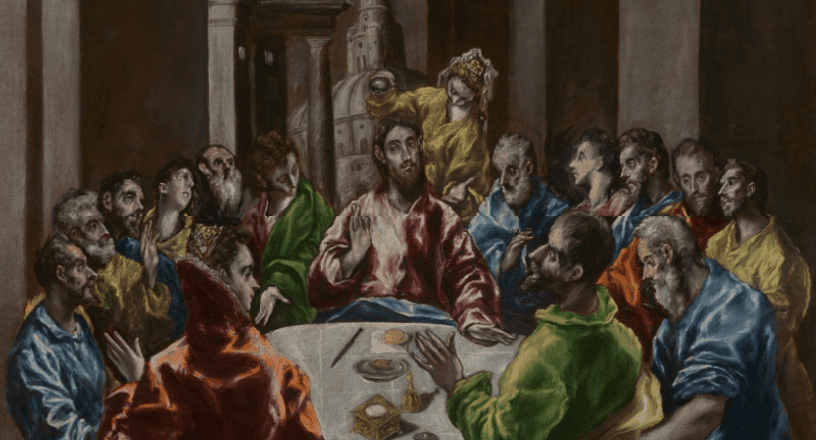From the earliest eras of the Christian Church, July 22nd has been set aside as a day to remember and pray with Mary Magdalene. Forever honored by the Gospels as the first witness to the Resurrection, Jesus immediately tasked her with the mission of spreading this Good News to the apostles themselves. Each Easter, through her tear-filled eyes we first glimpse Jesus triumphant over death. Each year it is us, beside Mary, who are assured that this man is much more than simply the local gardener. Through her perspective our Christian reality first takes form. She is the prototype for all Christians, people of the Resurrection.
All four evangelists specifically mention that she was also at the foot of the cross on Good Friday, making it clear that she experienced firsthand the totality of that very first Paschal Triduum. Outside of her role on those holiest of days, the Gospels don’t offer us many facts about who this woman was or why she was chosen as the Risen Christ’s first messenger. Luke tells us that she was among a group of women who provided for Jesus’ itinerant earthly ministry. Both he and Mark state that she was exorcized of seven demons. She must have experienced the mercy of God and found a place with the disciples, traveling with Jesus across the Holy Land.
The new preface to today’s Mass, promulgated in 2016 when Pope Francis elevated her memorial to a feast, does a good job in distilling why Christians hold a special place for her among the multitude of saints:
“He appeared in the garden
and revealed himself to Mary Magdalene,
who had loved him in life,
witnessed him dying on the Cross,
sought him as he lay in the tomb,
and was the first to adore him, newly risen from the dead.
He honored her with the office of being an apostle to the Apostles,
so that the good news of new life
might reach the ends of the earth.”
This may be all we “know” about her, but even a simple Google search will show how she has infiltrated the imagination and psyche of many, Christians and non-believers alike. Popular fictions abound, spurred on by countless books and understandings that range from the unorthodox to the heretical. Her obvious importance to Christianity, and therefore Western civilization as we know it, has led to her being co-opted and romanticized to fit various agendas and ideologies.
Perhaps it was Pope Gregory the Great, in the sixth century, that opened the door to the recasting of Mary Magdalene in the thoughts and imaginations of the public. In a sermon, he perhaps conflated Mary Magdalene with the Mary of Bethany, sister of Lazarus and Martha, and a nameless sinful woman described by Luke just prior to his first mention of the Magdalene. Although it is never stated that the sinful woman was a prostitute, from this connection Mary Magdalene gained that reputation in the Middle Ages. This composite understanding of Mary took root in the Western Church, yet the Orthodox Churches still claim a distinction between these women.
Like all Jesuit novices, I had the grace-filled opportunity to embark on the full thirty-day Spiritual Exercises of St. Ignatius of Loyola. During this time of reflection and imaginative prayer my devotion to Mary Magdalene crystalized, most powerfully during a reflection Ignatius dubbed, “The Conversion of the Magdalene,” based on Luke 7:36-50, the story of the nameless, sinful woman that tradition believed was Mary Magdalene. In this familiar scene, the woman, ostensibly so moved by a prior interaction with Jesus, barges into the home of a Pharisee who is hosting the Lord at table. She breaks open an expensive jar of perfume to anoint the feet of Jesus, washing them with her tears and drying them with her hair. This sensual display causes much scandal in the heart of the Pharisee, who is so taken aback that he surmises that Jesus must simply be ignorant of the woman’s reputation. Reading the turbulence in the Pharisee’s heart, Jesus tells a parable equating forgiveness and love, that a deeper forgiveness elicits a greater love. As the note on Luke 7:47 in the lectionary points out: “That the woman’s sins have been forgiven is attested by the great love she shows toward Jesus. Her love is the consequence of her forgiveness.” I will always remember the hour I spent imagining this scene, turning it over in my heart.
Immediately in my prayer, I realized this degree of love literally scared me. I could not, I would not be like her. The courage, faith, vulnerability, determination, and single-mindedness of this woman (cast as Mary Magdalene in my imagination) seemed like a bridge too far. Knowing what the future had in store for her, to become the Apostle to the Apostles, kind of made sense, as hers must have been a special case. She was forgiven completely and totally, so therefore she loved in that same way, leading her both to the cross and to the empty tomb. I remember praying, “I know I have been forgiven too, but since I am scared and do not have the capacity to love as Mary Magdalene does, perhaps only four, five, maybe six demons had been tormenting me in my past,” not the seven she had been saved from. I could not see myself ever loving as she loved, completely and totally focused only on Christ.
As I continued contemplating the scene, I had a chance to enter into colloquy with the Magdalene, to prayerfully talk to her using my imagination. In this conversation, she brought up important moments from my life. Without judgment, she showed me times where I had fallen short, times when I wasn’t the man I wanted to be. Bad decisions, unkept promises, the times when I loved people less than I could have. But she didn’t stop there. No, she knows the story does not end on Good Friday. She also invited me to consider times where I instead responded to life with love. Moments of selflessness, kindness shown to a stranger, a sacrifice for a friend. She made it clear this response was only possible because Jesus has and will always forgive me, and this forgiveness has led and will lead to love. She invited me to understand that she and I might not be as different as I had initially believed.
Amazingly, before this prayer had ended, God, with an assist from Mary, had transformed my fear to hope. As He must often do for me, He dismissed my thoughts of personal inadequacy and fear, instead offering me encouragement, love, and, in this instance, a saint to look towards and pray with as I quest towards a deepening relationship with Christ the Lord. For me, focusing on Mary Magdalene focuses me on Jesus, especially how He forgives all so love can flourish. Like she did long ago with Christ’s handpicked apostles, she is there for and with me “so that the good news of new life might reach the ends of the earth.”
Without what some might lament as an unfortunate conflagration from a pope fifteen-hundred years ago, this prayer would not have been possible. I am even comfortable saying that my life’s vocation was so affected that day I wonder if I would have had the courage and confidence to take the vows of a Jesuit last year without it. When asked if I would take a vow name, the decision was easy. Simply reading my name at the Cathedral in Syracuse last August was fruit from this prayer: Mario Joseph Salvatore Mary Magdalene Verde.
-//-
Header painting: The Feast in the House of Simon, El Greco


